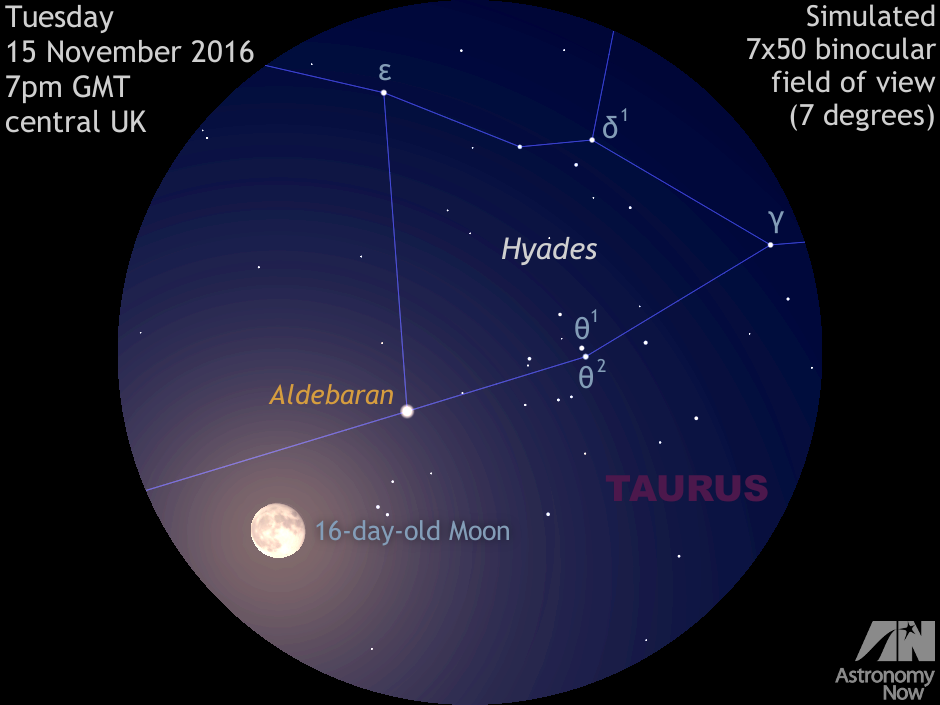
The pairing of the waning gibbous Moon and Aldebaran will be close enough for them to be seen in the same field of view of telescopes at magnifications of 25x or less, but it is in binoculars where the full beauty of the Moon’s stellar backdrop will become apparent.
Observers with low power, wide-field binoculars such as 7x50s or 8x30s will also see the V-shaped Hyades cluster in the same field of view. Note that the field is strewn with interesting wide double stars, particularly in the vicinity of naked-eye pair θ1 and θ2 Tauri.
While it may seem that Aldebaran is a member of the Hyades, it is merely a line-of-sight effect: the orange giant star and its dim red dwarf companion are 65 light-years away, whereas the 300 to 400 stars that comprise the cluster lie some 152 light-years from Earth.
While you’re in the area, don’t miss the beautiful Pleiades open cluster, otherwise known as the Seven Sisters, two binocular fields away to the upper right of the Hyades.
Inside the magazine
For a comprehensive guide to observing all that is happening in the current month’s sky, tailored to Western Europe, North America and Australasia, obtain a copy of the November 2016 edition of Astronomy Now.
Never miss an issue by subscribing to the UK’s biggest astronomy magazine. Also available for iPad/iPhone and Android devices.




